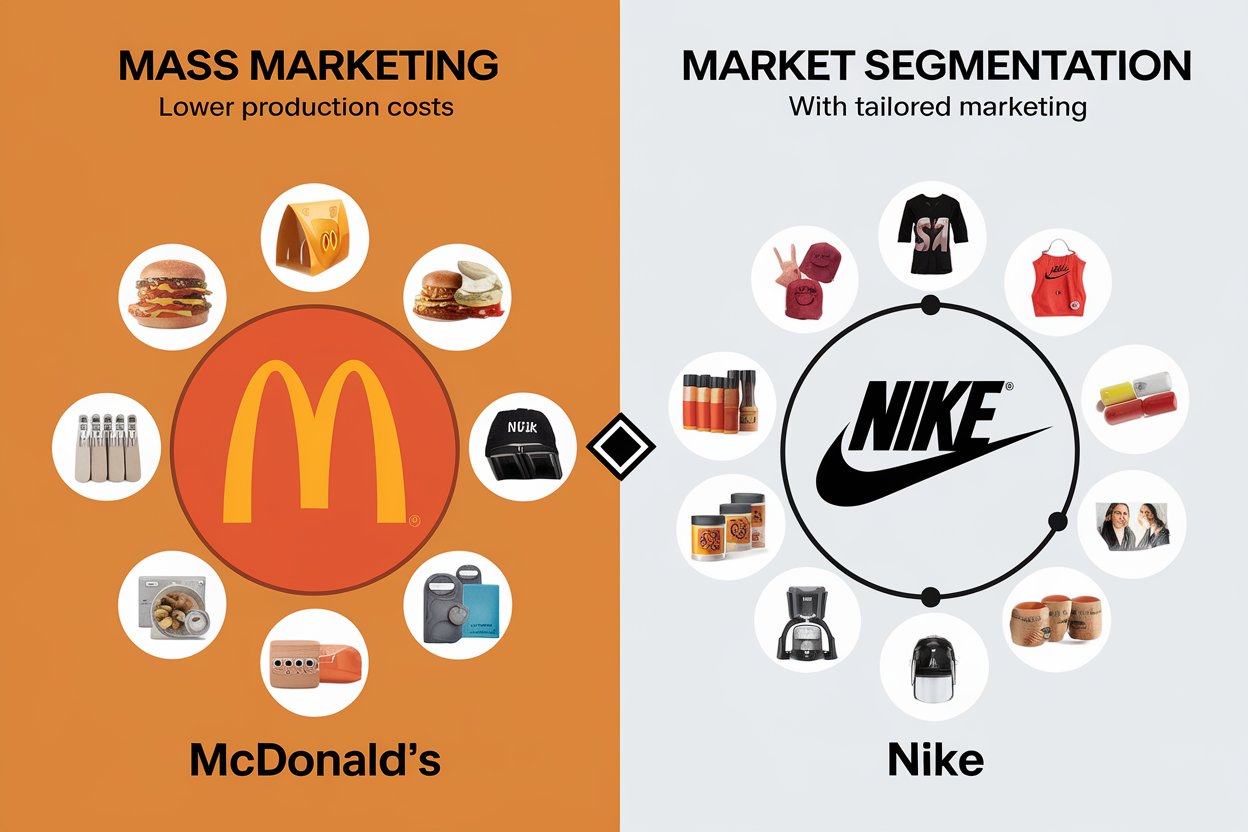Q. No. 8 Comparing the Advantages of Mass Marketing and Market Segmentation with Business Examples.

Comparing the Advantages:
Comparison of Advantages: Mass Marketing vs. Market Segmentation with Business Examples
In marketing, companies can adopt different strategies to reach their customers. Two prominent approaches are mass marketing and market segmentation. Each method has its own advantages, and businesses often choose between them based on their objectives, resources, and customer base.
1. Mass Marketing
Mass marketing refers to the strategy of targeting a broad audience with a single product or message, assuming that all consumers have similar needs and preferences.
Advantages:
- Economies of Scale: Companies benefit from producing and distributing a single product at high volumes, reducing per-unit costs.
Example: Coca-Cola’s classic Coke is marketed globally with the same product and message, benefiting from large-scale production and distribution. - Brand Recognition: A consistent message across a large audience leads to strong brand awareness and loyalty.
Example: McDonald’s uses mass marketing to promote its global fast-food chain, ensuring the brand is recognized worldwide. - Cost Efficiency in Advertising: Companies save on marketing costs by running one advertising campaign aimed at a broad audience.
Example: Apple often uses mass marketing to promote new iPhone models through global campaigns.
Disadvantages:
- Less focus on specific consumer needs, which may result in lower customer satisfaction compared to more tailored approaches.
2. Market Segmentation
Market segmentation divides the broader market into smaller, more defined groups based on characteristics like demographics, geography, behavior, or psychographics. Companies can then tailor products and marketing efforts to meet the specific needs of each segment.
Advantages:
- Better Customer Focus: Products and marketing messages can be tailored to meet the unique needs and preferences of different customer segments, improving customer satisfaction.
Example: Nike segments its market based on different sports (e.g., running, basketball) and offers specialized products for each. - Higher Customer Retention: Personalized marketing and product offerings increase customer loyalty and retention.
Example: Amazon uses personalized recommendations based on customer behavior, enhancing customer experience and encouraging repeat purchases. - Increased Market Share in Target Segments: Companies can dominate specific market segments by addressing unmet needs.
Example: Luxury car brands like Mercedes-Benz focus on high-income consumer segments, offering premium features and personalized service.
Disadvantages:
- Segmentation can be more expensive due to the need for multiple products, marketing campaigns, and research to understand different customer groups.
Conclusion
Both mass marketing and market segmentation offer distinct advantages. Mass marketing works best for products with broad appeal and for building brand awareness, while market segmentation allows companies to focus on specific needs, leading to better customer satisfaction and loyalty. Businesses like Coca-Cola thrive using mass marketing, whereas companies like Nike leverage segmentation to cater to diverse consumer needs. The choice depends on the company’s goals, market characteristics, and resources.